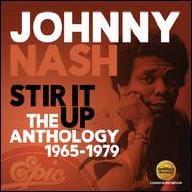Born in Houston, Texas, on August 19, 1940, Nash honed his vocal skills singing in his Baptist church's choir, and by 13 was a regular on the local television series Matinee, performing covers of current R&B hits. In 1956, he was discovered by Arthur Godfrey, appearing on his radio and TV broadcasts for the next seven years. Nash signed to ABC-Paramount to release his 1957 debut single, "A Teenager Sings the Blues," scoring his first chart hit early the following year with a rendition of Doris Day's "A Very Special Love." In late 1958, he also teamed with Paul Anka and George Hamilton IV for the inspirational "The Teen Commandments." Marketed as a rival to Johnny Mathis, he even began a film career with 1959's Take a Giant Step, also appearing in 1960's Key Witness before his career flagged with a series of little-noticed singles for Warner Bros., Groove, and Argo.
Nash returned to prominence in 1965 when the ballad "Let's Move and Groove Together" reached the R&B Top Five; more importantly, the record became a major hit in Jamaica, where he traveled in 1967 on a promotional tour. During a return trip, he cut the ska-influenced single "Hold Me Tight" at Byron Lee's Federal Studios; a Top Five pop hit on both sides of the Atlantic, the record was issued on his own JAD label, which in early 1970 scored a Top 40 hit with a reggae-fied rendition of Sam Cooke's "Cupid" as well. The following year, Nash scored a major British hit with his reading of the Bob Marley perennial "Stir It Up." While living in Britain, he signed to Epic, which in 1972 released his biggest hit, "I Can See Clearly Now"; the song sat atop the American pop charts for four weeks. Although his popularity at home again dimmed, Nash returned to the U.K. charts in 1975 with his number one classic "Tears on My Pillow," followed a year later by another Sam Cooke cover, "(What A) Wonderful World."
He gradually retired from performing, although he released an album, Here Again, in 1986, and made a few live appearances. In the early 2000s, Nash began the work of transferring analog tapes of his material from the '70s and '80s to a digital platform at Tierra Studios in his native Houston. Intensely private, he stayed out of the public eye except for occasional tours as the 21st century deepened. Johnny Nash died at his home in Houston on October 6, 2020; he was 80 years old. ~ Jason Ankeny, Rovi

















